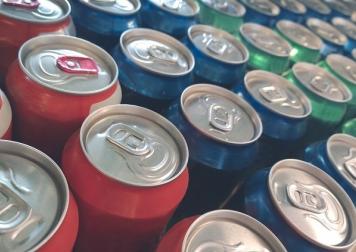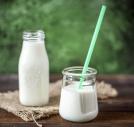Animal Insulin vs Synthetic Insulin: Similar Genes, Different Origins
Humans with diabetes started using insulin extracted from the pancreas of cows or pigs in 1922. Some people developed allergies to animal (or natural) insulin, but its use saved countless lives. Today, most people who need it use synthetic or human insulin, first manufactured in the early 1980s.
Though many individuals complained of side effects after switching from animal to synthetic insulin, the synthetic type is now prescribed almost exclusively in many parts of the world.
Whether natural or synthetic, the therapeutic use of insulin by humans depends on our similarity to nonhuman creatures.
Our Genetic Cousins
Proteins are similar to a string of beads, and the “beads” are called amino acids. The amino acids that make up our human insulin protein are nearly identical to the string of amino acids in cow and pig insulin. Pork insulin is different by one amino acid, and bovine insulin by three – similar enough for most humans to use.
In the 1950s, when the complete protein structure of insulin was deciphered, some companies began modifying animal insulin. They removed the different amino acid from pig insulin, replacing it with the human counterpart. So, other than its origin, the pig insulin was made human.
Although insulin was being modified before the creation of the synthetics, the production of synthetic insulin has nothing to do with altering the proteins of other mammals. It involves life forms much smaller.
Synthetic Soup
A protein, such as insulin, is created when its amino acid sequence (genetic information) is copied and then reproduced.
- Scientists who have learned the genetic sequence of human insulin create copies of it by splicing together pieces of genetic material in the proper order.
- Circular strands of DNA, called plasmids, are extracted from bacteria cells. Enzymes are used to perform plasmid surgery, sewing the pieced-together insulin code into the plasmid circle.
- The modified plasmids are put into a bacterium, often benign E. coli., which acts as a surrogate protein parent. (Baker’s yeast can also be used to create insulin protein.)
- The impregnated E. Coli are placed in large stainless steel fermentation vessels that contain nutrients for growth. The growing bacteria read the transplanted plasmid’s genetic code and create insulin proteins. (Tetracycline is added to kill off any wayward bacteria.)
- After fermentation, the bacteria are filtered from the nutrient solution and then broken open, releasing the insulin they produced.
- The insulin is purified and packaged for use.
So animal and synthetic insulin have hugely different backgrounds but are structurally similar or the same. Yet manufacturers, doctors, and individuals often prefer one over the other for a variety of reasons.
Synthetic Pros and Animal Insulin Advocates
The supply of insulin born from bacteria is considered to be limitless as it is not dependent on the availability of animal pancreases. It is also cheaper to grow vats of bacteria than to house and feed animals, and bacteria grow more quickly than cows or pigs.
Synthetic insulin is free from animal contaminants. It is purified during production, and its protein structure is identical to human insulin.
Although some diabetics have nasty reactions to synthetic insulin, its lower manufacturing cost and ease of production have inspired many pharmaceutical companies to stop making pork or beef insulin. This creates a supply inconvenience for those who rely on the animal variety.
Some of these inconvenienced individuals believe with all the cattle and hogs that die naturally or are slaughtered for food, animal insulin is actually plentiful and not that expensive to make.
People preferring animal insulin report it seems slower acting, longer-lasting and gentler than the synthetic. Some users have fewer hypoglycemic events and say that such events come on more slowly, giving them plenty of warning. They wonder if the purity of synthetic insulin makes it too “harsh” for some individuals.
Sources: Diabetes Well Being, History of Insulin
Photo: Pixabay



































